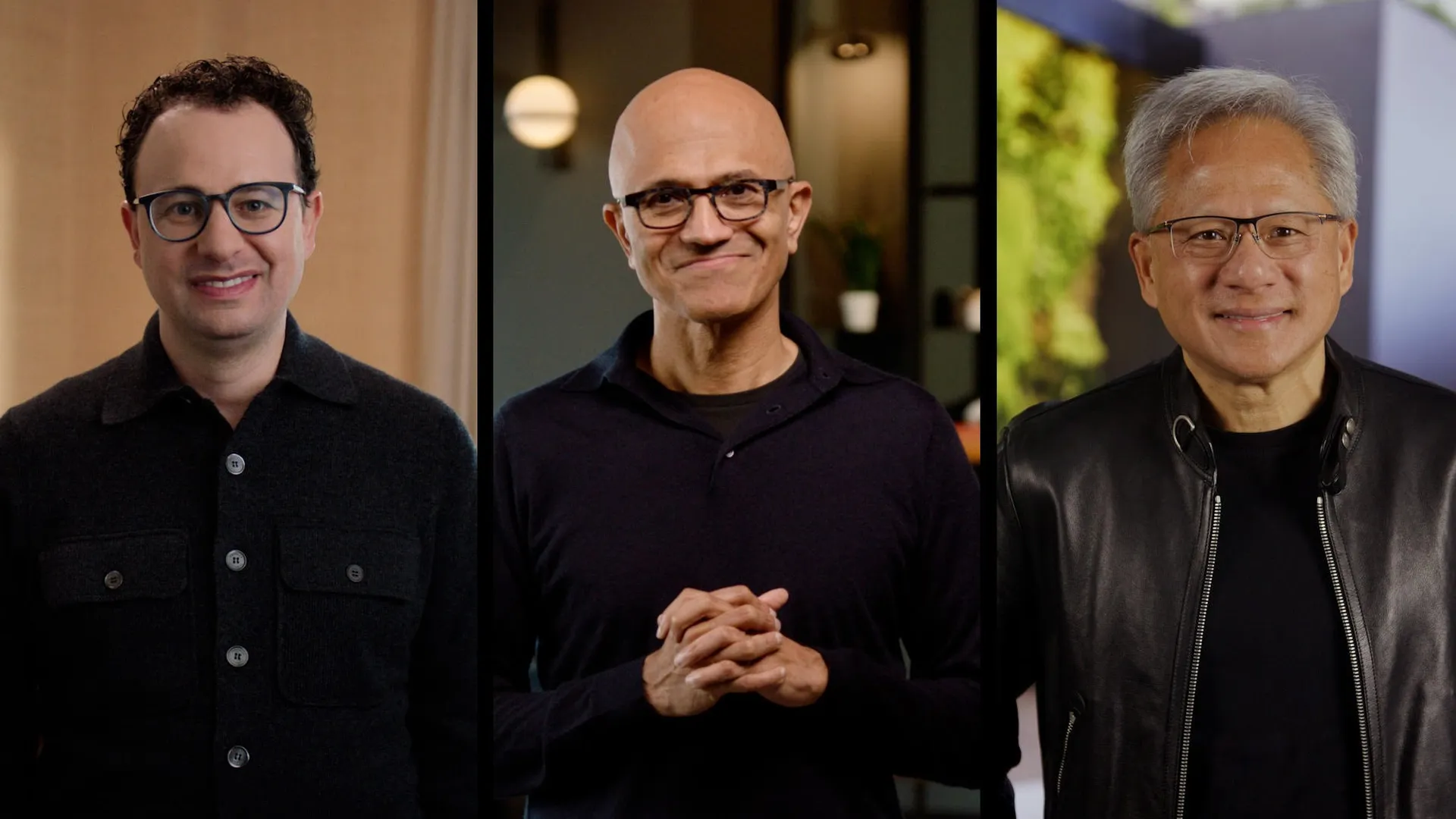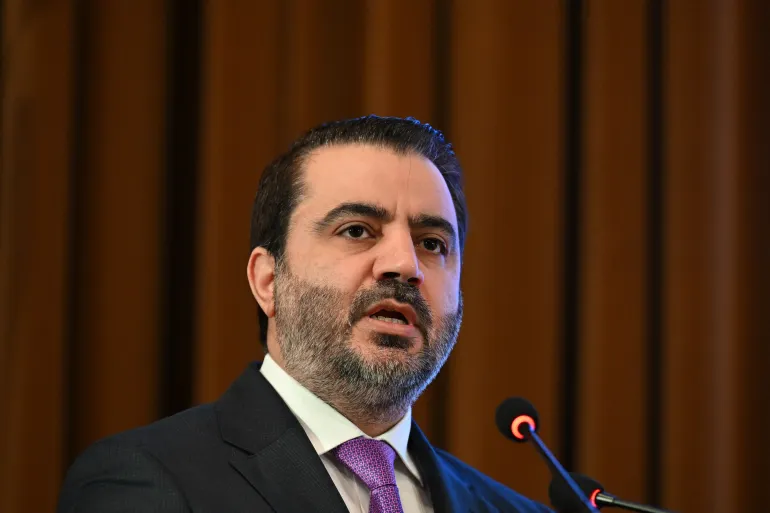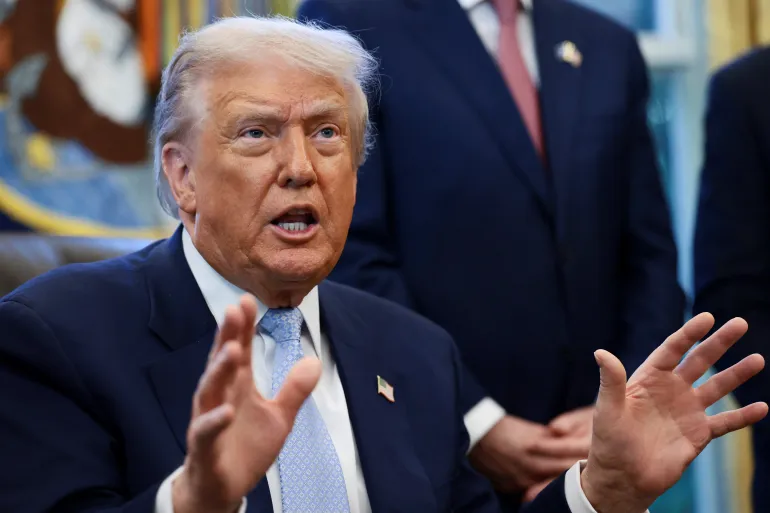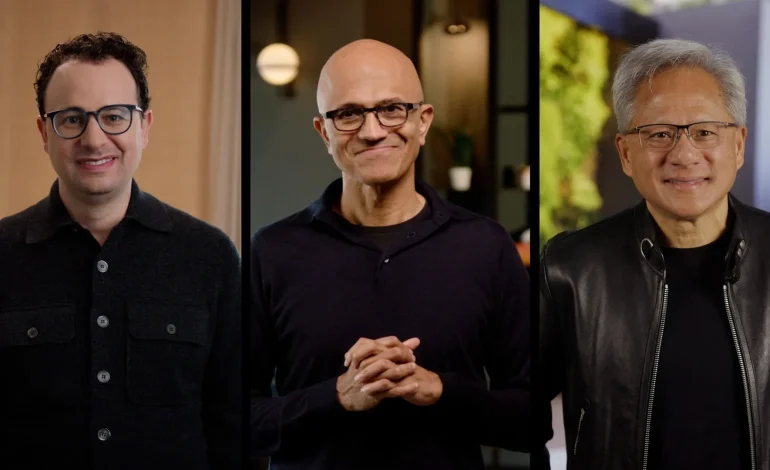With input from Bloomberg, CNBC, Anthropic, Microsoft, Reuters, Axios, Business Insider.
Microsoft and Nvidia are doubling down on Anthropic — and on each other.
The two tech giants have agreed to invest up to $15 billion in the Claude maker, while Anthropic is committing to spend $30 billion on Microsoft’s Azure cloud, in a sprawling tie-up that neatly captures how tangled and self-reinforcing the AI ecosystem has become.
Under the deal, Nvidia will invest up to $10 billion and Microsoft up to $5 billion, with both backing Anthropic’s next funding round, people familiar with the matter say. The investment is part of a broader strategic partnership that gives each side something it badly wants.
On the other side of the ledger, Anthropic is locking in one of the biggest cloud commitments we’ve seen so far in AI:
- It will spend $30 billion on compute from Microsoft Azure,
- And contract up to 1 gigawatt of capacity using Nvidia’s latest Grace Blackwell and Vera Rubin systems.
Industry execs estimate that 1 GW of AI compute can cost anywhere from $20–25 billion, once you factor in the chips, data centers and supporting infrastructure. It’s a serious bet that demand for Anthropic’s Claude models will keep climbing.
Anthropic CEO Dario Amodei called the deal “a dream come true” in a joint video, and stressed that Claude will now run across all three of the biggest clouds — Amazon, Google and Microsoft. With this, Claude becomes the only frontier model available on all three platforms.
For Microsoft, the move is as much about diversification as it is about growth.
The company has already poured tens of billions into OpenAI and built much of its Copilot strategy on GPT models. But after OpenAI restructured its governance and started branching out — including a huge cloud deal with Amazon — Microsoft has made it clear it doesn’t want to be tied to just one “frontier” lab.
“We’re increasingly going to be customers of each other,” CEO Satya Nadella said of Anthropic. “We will use Anthropic models, they will use our infrastructure, and we’ll go to market together.” OpenAI, he added, “remains a critical partner.”
With Anthropic on board, Azure AI Foundry customers will get access to the latest Claude models — including Claude Haiku 4.5, Sonnet 4.5 and Opus 4.1 — alongside GPT and models from Meta, xAI and others. It’s a way for Microsoft to pitch Azure as the ultimate “bring any model” platform for enterprises, rather than a one-model bet.
For Nvidia, this is about cementing its role at the center of the AI money machine.
The chipmaker — now worth around $4–5 trillion at its peak — is under pressure to show that all the GPU demand it’s enjoying today will translate into sustainable, long-term business. By tying itself closely to Anthropic, Nvidia is effectively pre-selling a big chunk of future capacity:
- Anthropic is initially committing to up to 1 GW of Nvidia-based compute,
- And the two companies will co-design and optimize future models and chip architectures around each other.
Nvidia CEO Jensen Huang was effusive, calling the partnership “a dream come true” and praising Anthropic’s “seminal work in AI safety” and Claude’s strength in coding.
“The engineers of Nvidia love Claude Code,” he said.
It’s also a hedge: Nvidia has been seen as heavily exposed to OpenAI’s fortunes. Backing Anthropic broadens its base of top-tier AI customers at a time when investors are asking whether AI spending can keep justifying current valuations.
Founded in 2021 by former OpenAI researchers, Anthropic has quickly become one of OpenAI’s most serious rivals.
A few key points about its rise:
- It was recently valued at about $183 billion, and this deal reportedly pushes that into the $350 billion range (final terms are still being hammered out).
- It has more than 300,000 business and enterprise customers, with a strong focus on sectors like finance, healthcare and software development.
- Internal projections cited by investors suggest revenue could more than double, or nearly triple, to around $26 billion next year.
Anthropic has tried to differentiate itself with a heavy emphasis on safety and controllability, using its “Constitutional AI” approach to train models to follow high-level rules and norms. That’s resonated with large companies that want powerful AI but worry about reputational and compliance risks.
Deals like this are exactly what has some on Wall Street nervous.
On paper, everyone wins:
- Anthropic gets vast compute and fresh capital.
- Microsoft gets another flagship model on Azure and a counterweight to OpenAI.
- Nvidia gets guaranteed demand for its chips and a tight integration with a leading AI lab.
But critics point out that these are also circular transactions:
- Big tech companies invest billions into AI startups,
- Those startups then sign huge, multi-year contracts to buy cloud and chips from the same investors,
- Which in turn boosts the investors’ revenue and the narrative that AI demand is “exploding.”
With AI valuations sky-high and infrastructure commitments running into the hundreds of billions or even trillions, some analysts see these loops as classic bubble behavior.
This particular deal also lands on the eve of Nvidia’s earnings, which are being treated as a referendum on how sustainable the AI boom really is. Nvidia’s stock has slipped in recent days as investors debate whether spending on AI data centers is running ahead of real-world returns.
It’s worth noting what this doesn’t do.
- OpenAI is not being displaced. Microsoft says it will continue to be a “critical partner,” and GPT models remain core to many of Microsoft’s Copilot products.
- Amazon Web Services is still Anthropic’s primary cloud and training partner, after an earlier $8 billion investment and a big buildout of custom AWS chips for Anthropic workloads.
- Google has its own massive deal with Anthropic, providing up to 1 million AI chips and deepening their cloud relationship.
In other words: the AI world isn’t consolidating into a neat set of one-to-one alliances. It’s becoming a dense web of overlapping partnerships, where the same few players — Microsoft, Nvidia, Amazon, Google, OpenAI, Anthropic — are both competitors and customers.
As eMarketer analyst Jacob Bourne put it, these deals show the industry “consolidating around a few key players.” The open question is whether that consolidation ends with a stronger, more stable AI ecosystem — or sets up a major reckoning if the promised profits don’t arrive fast enough.
For now, though, Anthropic has just secured the kind of backing and compute runway most AI startups can only dream of.










The latest news in your social feeds
Subscribe to our social media platforms to stay tuned